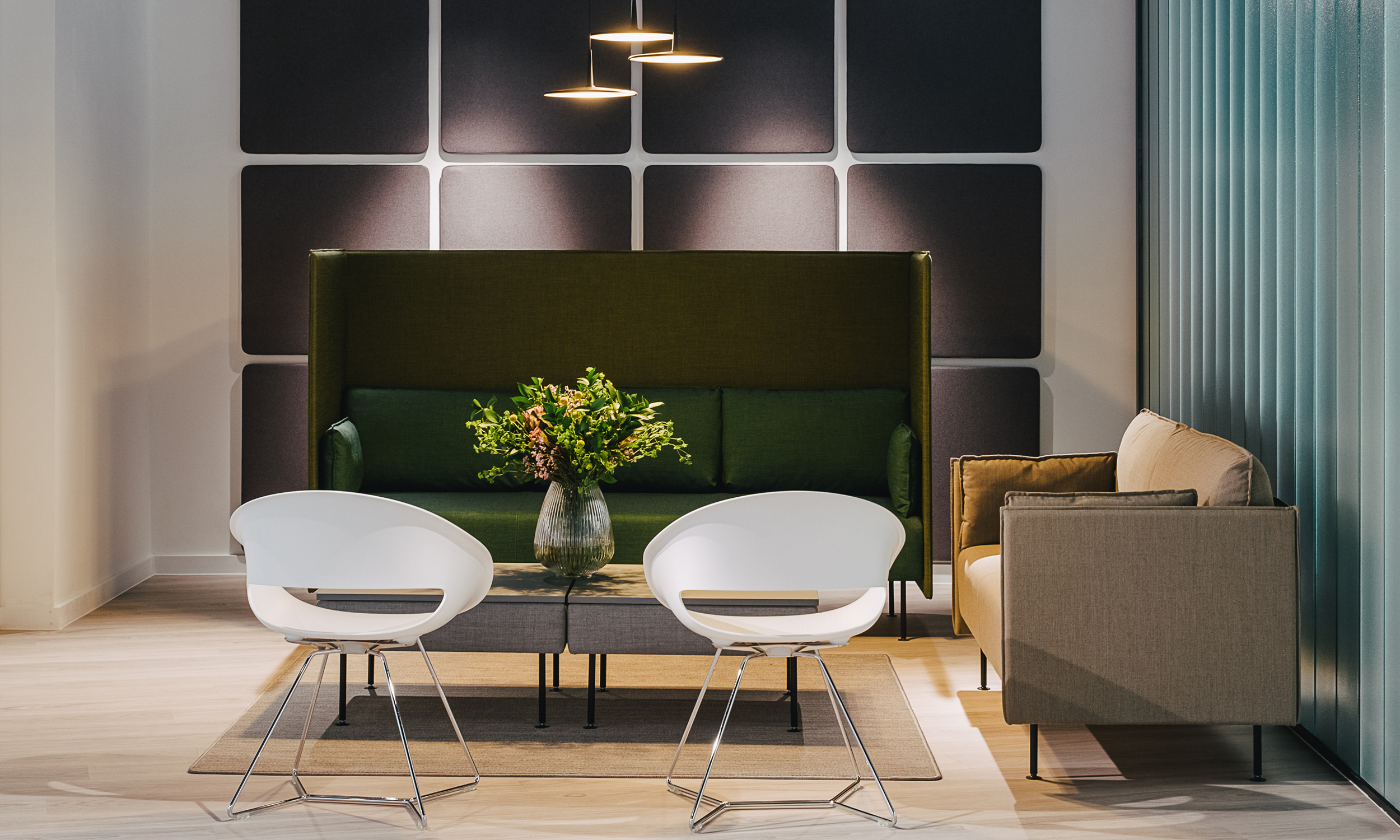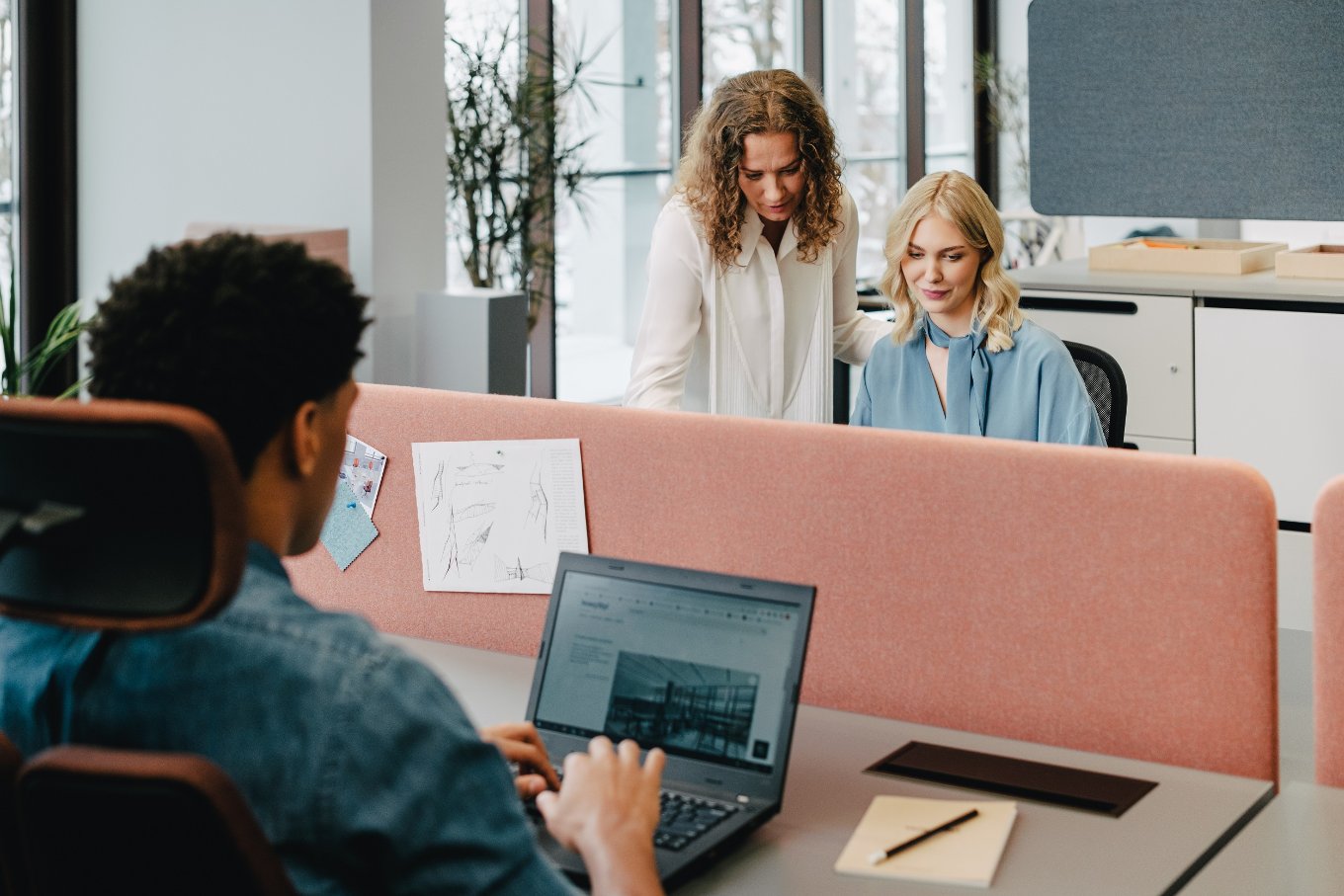More than a chair and a desk: Ergonomics 2.0
When speaking about office ergonomics, we can see a workstation suited to our physical needs: a comfortable, customized chair, a stable desk, or a proper computer screen. But there’s more to it. Ergonomics 2.0 is a broader outlook, which includes mental wellbeing, physical comfort and various elements of the working environment that affect the way we feel and work.
Lighting
Daylight is best for work, but you should make sure that on sunny days bright light does not reflect from your computer screen. The screen should be positioned sideways to the window (when it’s facing away from the window, you risk being blinded by reflection, while when it’s facing the window, your eyes will suffer from excessive contrast between the screen and the background light). Windows must have appropriate curtains or blinds. The same is true of artificial light – the best option is a ceiling lamp, which casts even light on the whole workspace.
Acoustics
Although you might think while noise is an issue in a factory, it shouldn’t be a problem in an office, acoustics gets more and more attention at the office design stage. Mental effort requires appropriate focus. Loud conversations or the sound of an office shredder might adversely affect our mood and productivity. The stage of office design is all-important. You should pay attention to how you position noisy office equipment or how you plan chillout zones away from the places assigned to quiet focus work. Many rooms will need properly selected sound-absorbing panels. Standalone panels or those fixed to the walls and ceilings will work miracles for the acoustic comfort in your office.

Biophilic design
Plants have always been a nice addition to an office, but recently we’ve been discovering a whole new level of this aspect. Large, exotic plants, green walls full of vegetation or flowers in a variety of juicy colours are often incorporated in an office design. Plants are just part of the entire trend known as biophilic design, which is all about connecting people to the natural environment and incorporating natural shapes and materials in office design.
Scientists from Exeter University have discovered that in a truly green office, employee satisfaction and productivity are boosted by 15% when compared to a minimalistic, basic interior without plants. Plants not only refresh the air we breathe, but their colours offer our eyes a moment of well-deserved relaxation. A room full of plants makes people feel better and relieves everyday stress.
Get moving
Employers have been making constant efforts to encourage their employees to exercise. Some offer sports packages and incentives, others put a swing in the chillout zone. Some companies also organize yoga classes as a break during a business day. Even a short break or a walk will be good for your spine and mind. The longer you work without a pause, the more difficult you find it to focus. A short break from the task at hand will also help you gain a new perspective and maybe come up with better solutions.
Cognitive ergonomics
The latest branch of ergonomics is cognitive ergonomics – it focuses on how the environment and the tasks you perform tune in with your cognitive abilities. Cognitive ergonomics studies the impact of systems on your perception, memory, and the ability to remember and recall, but also on the mental load inherent in modern work. While a factory worker needs a set of useful tools, an office employee needs a manageable and functional collection of programmes and applications. Complicated tasks should be alternated with easier ones.
Text prepared by Zofia Bocheńska-Szupik, Product Trainer and Advisor at Nowy Styl
Plants have always been a nice addition to an office, but recently we’ve been discovering a whole new level of this aspect. Large, exotic plants, green walls full of vegetation or flowers in a variety of juicy colours are often incorporated in an office design. Plants are just part of the entire trend known as biophilic design, which is all about connecting people to the natural environment and incorporating natural shapes and materials in office design.
Scientists from Exeter University have discovered that in a truly green office, employee satisfaction and productivity are boosted by 15% when compared to a minimalistic, basic interior without plants. Plants not only refresh the air we breathe, but their colours offer our eyes a moment of well-deserved relaxation. A room full of plants makes people feel better and relieves everyday stress.
Get moving
Employers have been making constant efforts to encourage their employees to exercise. Some offer sports packages and incentives, others put a swing in the chillout zone. Some companies also organize yoga classes as a break during a business day. Even a short break or a walk will be good for your spine and mind. The longer you work without a pause, the more difficult you find it to focus. A short break from the task at hand will also help you gain a new perspective and maybe come up with better solutions.
Cognitive ergonomics
The latest branch of ergonomics is cognitive ergonomics – it focuses on how the environment and the tasks you perform tune in with your cognitive abilities. Cognitive ergonomics studies the impact of systems on your perception, memory, and the ability to remember and recall, but also on the mental load inherent in modern work. While a factory worker needs a set of useful tools, an office employee needs a manageable and functional collection of programmes and applications. Complicated tasks should be alternated with easier ones.
Text prepared by Zofia Bocheńska-Szupik, Product Trainer and Advisor at Nowy Styl
